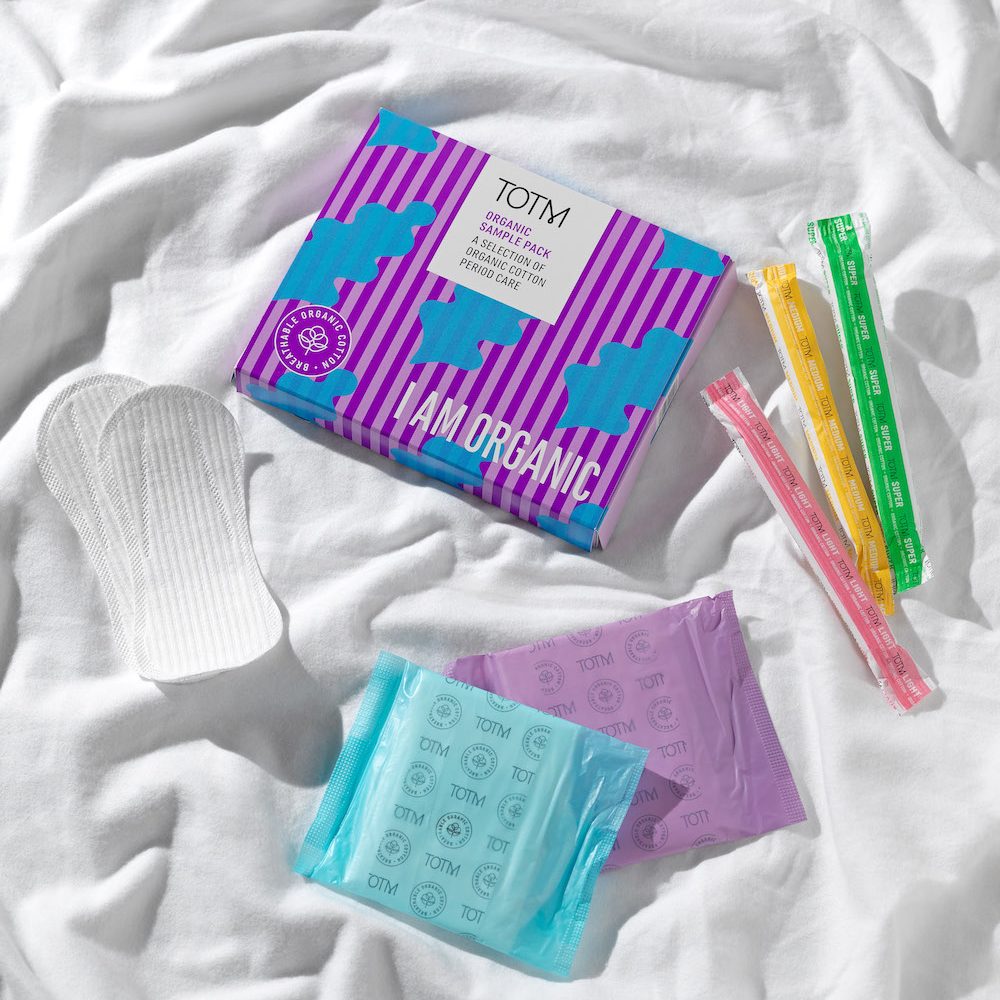By Martha Jennings for the Period Dignity Campaign
Recently, I have found myself having increased conversations about sustainable period products starting with, “Have you tried a menstrual cup?”, “Have you tried reusable pads?”. Honestly, it was not until this year that I discovered sustainable period products myself. With my eco-conscious mindset, I started questioning how I could reduce the waste created by the disposable products I had used monthly and with this research I began to realise the shear amount of waste myself alone accumulated from using disposable products.
According to the Independent, in the UK alone, disposable single-use menstrual products generate more than 200,000 tons of waste with plastic products taking hundreds, maybe thousands of years to decompose on landfills or in the ocean. It only takes a quick internet search to discover that 90% of menstrual pads are made of plastic. Even reminders on the back of public toilet doors to not flush menstrual products seem to be ignored with 1.5-2 billion being flushed down Britain’s toilets. To my surprise I discovered that even though a lot of tampon applicators are labelled as recyclable, they are not being recycled because it’s considered medical waste. Not only is the environmental impact shocking but the amount of money each person who menstruates spends with each period costing up to roughly ┬ú492 a year. As the National Graphic has stated it is hard to estimate just how much waste is produced because it is labelled as medical waste and therefore not tracked. It is clear that the plastic-hooked businesses and society we live in need to change in order to improve this.
These overwhelming statistics got me thinking about how all these plastics had accumulated. It was no surprise to learn that big businesses in the U.S for decades had been promoting single-use plastic, discrete period products. Not only did this continue the taboo attitude towards periods in general, it created further plastic waste. On record the first tampon was created in 1929 by an American osteopath called Dr Earle Haas and his designs remains similar to the tampons you can buy from local supermarkets today. From the 1970’s and the invention of flexible plastics, plastic tampons and applicators which were fast, cheap and easily produced, took the world by storm. Very much a similar scene we see today. It is expected by 2027 that the Feminine Hygiene market globally will be earning ┬ú36.8 billion whilst also gaining a carbon footprint of 5.3kg of CO2 equivalents a year, which began to infuriate me.This is when I first began the quest to find sustainable period products and start conservations about how people could swap to sustainable products. I took to my Instagram to discover how many of my friends and family had heard and used sustainable period products where 81% percent said they had heard of them but only 34% had used them. The response from peers was incredibly positive with many describing how much they had enjoyed using menstrual cups and how much money they saved. As not a big fan of tampons myself, reusable period pads are a new favourite of mine. (A quick hint: if you use reusable pads remember to first wash them in cold water to get the blood out, then you can put them in the washing machine, on 30 degrees or less). After the success with my reusable pads, I continued my research to find the best sustainable period products on the market today and compiled a list:
TOTM: You can find these in the Students Union!

Totm stocks a wide range of period products, including menstrual cups, pads, liners, applicator tampons and non-applicator tampons. Their products don’t contain any plastic or harmful chemicals, and they use organic cotton, as well as being zero-waste!
Sustainable period pants: Wuka

Wuka has been praised for their period pants made of recycled nylon, generated from old plastic bottles, wearers were impressed with how discreet they looked with no significant panty line.
Reusable menstrual cup: Saalt

BPA, Latex, Toxin and Vegan & Cruelty Free, (Hot tip: when buying a menstrual cup make sure to check out the sizing for the best fit. Saalt has a quiz you can take to find the best fit for you).
Sustainable tampons: Dame

Dame have designed a world first, reusable tampon. With 12,000 uses and easy to clean. Dame makes for a good sustainable change. 
Sustainable period pads: Fern

Fern Period pads come in many designs at an affordable price made from reusable products designed for comfort.
Though products above might seem expensive at first, it will save you a lot of money in the long run whilst saving the planet simultaneously. On a more serious note, if you have the money to do so then use your consumer privilege to buy sustainable period products to cut plastic waste and emissions. Even talking about sustainable period products will help to change the stigma around periods to create less of a taboo subject. I hope to see a world where periods are celebrated, products do not harm people or mother nature and we can continue to live comfortable, happy lives. Let’s change the conversation, period.
Hope Docherty is the lead writer for Spotlight’s “Period Dignity” article campaign. If you have any questions or pitches- all around the topic of periods- that you’d like featured in this campaign, please get in touch with spotlight@quenchmag.co.uk and Hope will get back to you as soon as possible! You can have a look at Cardiff University’s Period Dignity Campaign┬áhere.
Instagram: @quenchspotlight
Write for us: email spotlight@quenchmag.co.uk or join the Facebook group where all pitches are posted
Our articles: Spotlight


